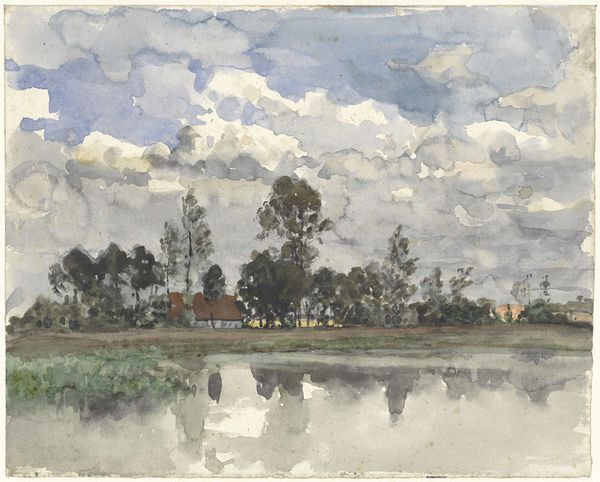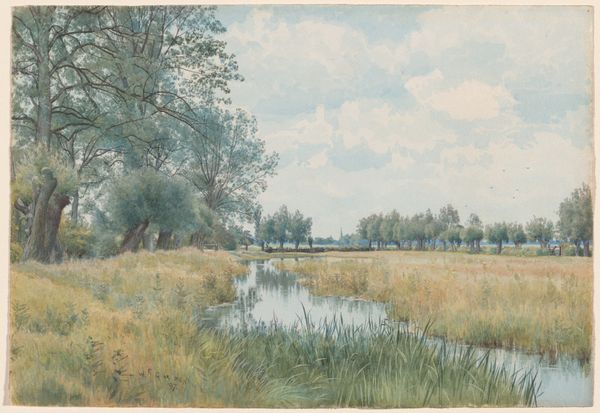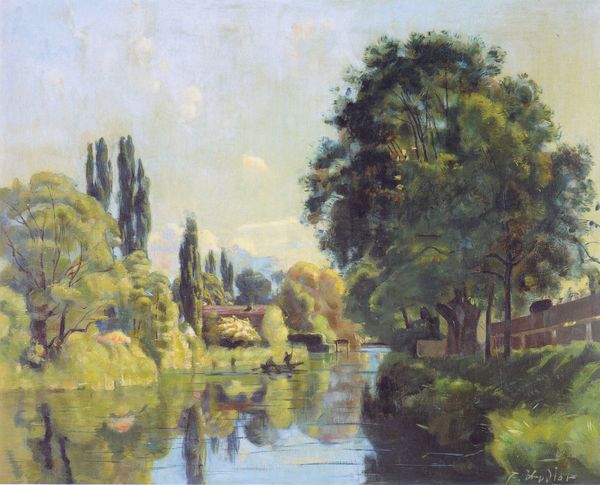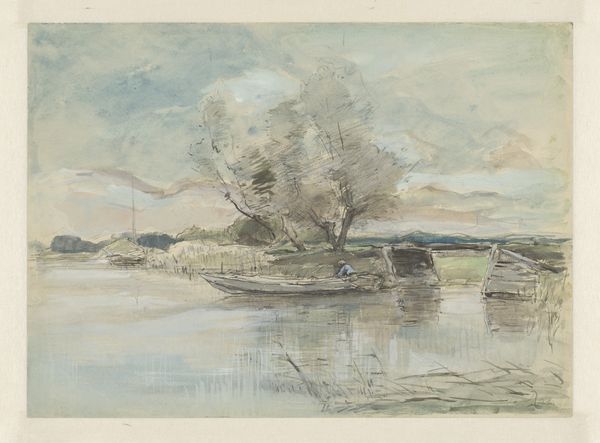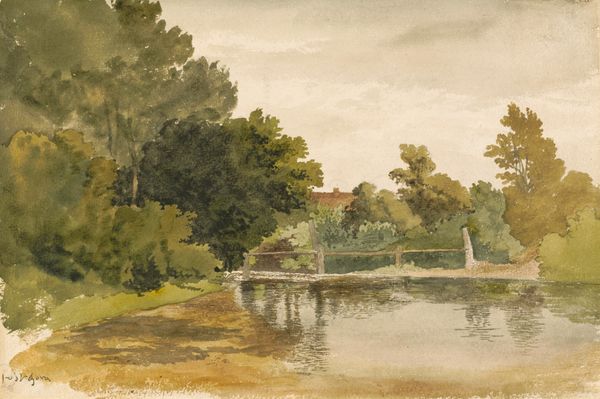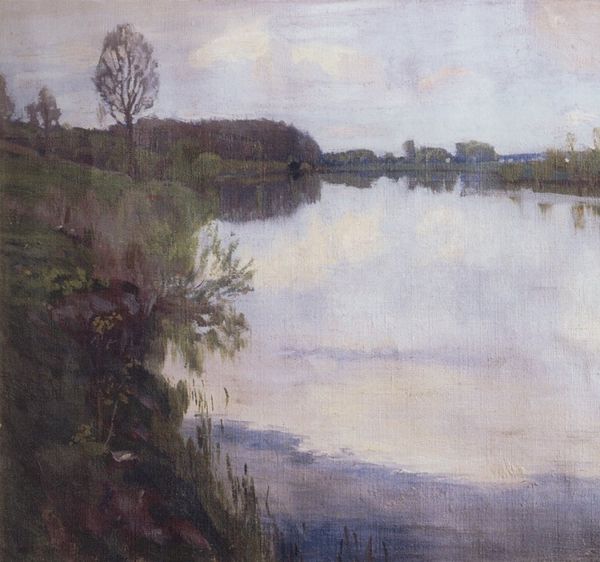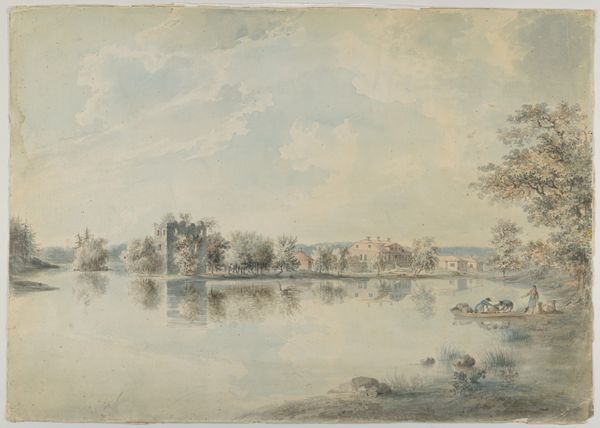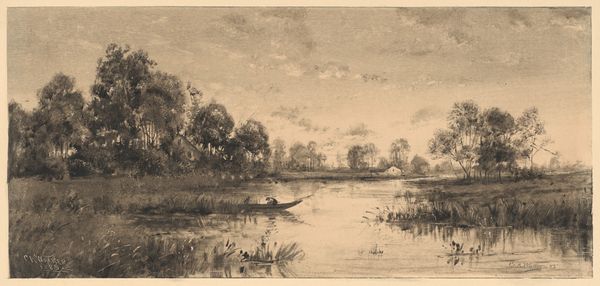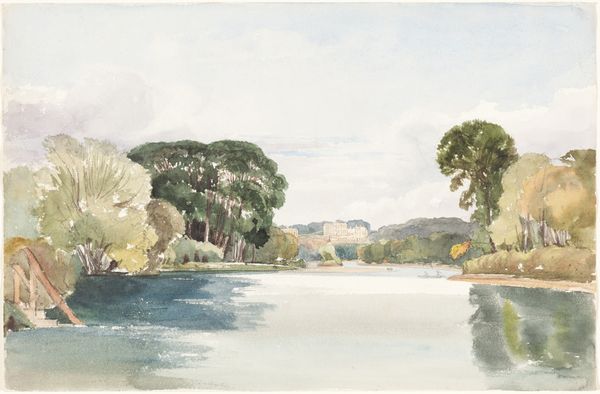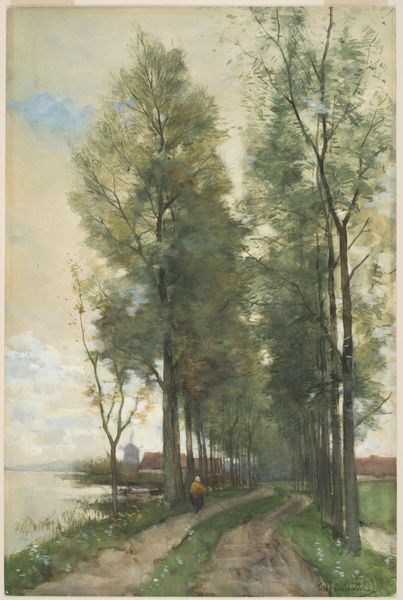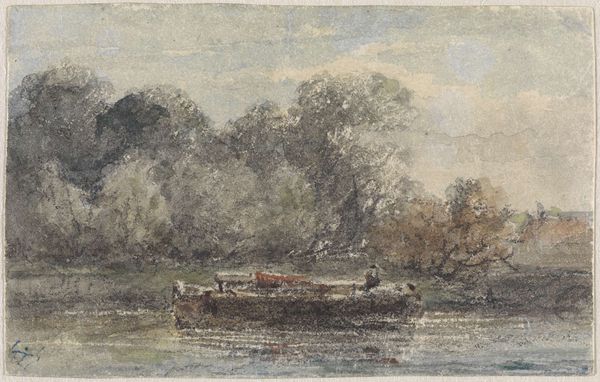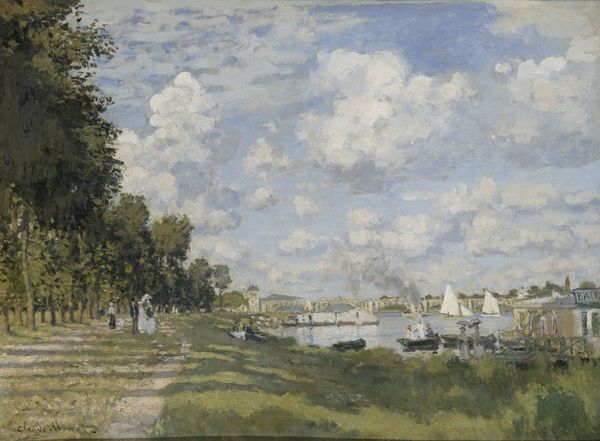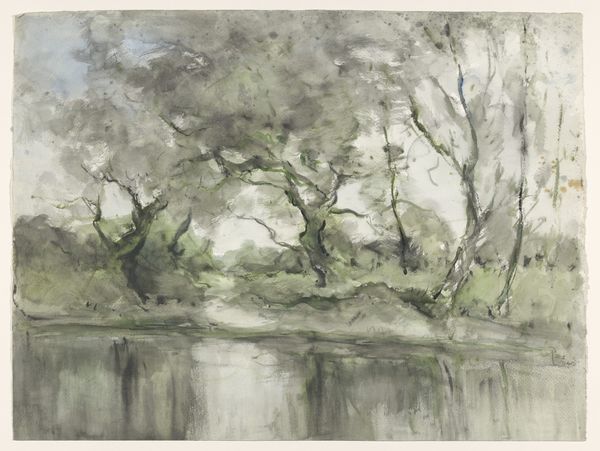
plein-air, watercolor
#
impressionism
#
plein-air
#
landscape
#
watercolor
#
watercolor
Dimensions: height 336 mm, width 495 mm
Copyright: Rijks Museum: Open Domain
Curator: Looking at "Hollandse Vaart" by Fredericus Jacobus van Rossum du Chattel, created sometime between 1875 and 1899, what captures your attention first? Editor: It’s the hazy calm. The colors are so muted and watery, everything feels incredibly still and serene. The composition directs you across the water, left to right, settling on the far shore. It looks like a study in the poetics of leisure. Curator: It's fascinating to consider this work within the context of the rise of plein-air painting. Artists were increasingly engaging with their immediate environments, and watercolor, a medium easily transported, became a vital tool. What might it tell us about class? Editor: Absolutely. Watercolor allowed for relatively quick execution; perfect for capturing a fleeting impression en plein air. The materiality suggests an accessibility to wider audiences beyond the elite, engaging notions of both work and access in visual culture. There are direct links between artistic materials, artistic labour, and the intended viewership, especially given its period of creation. Curator: Right. You see how the landscape is flattened and the composition emphasizes a single, small sailboat, hinting at human impact. We can investigate the industrial context – consider the labor involved in shipbuilding, its economic dimensions, and its effects on local waterscapes. How does its existence and representation fit into notions of national identity? Editor: Definitely, because it reflects not only a direct response to light and atmosphere of place, but it subtly incorporates this theme through the narrative elements too. Given its era, might the subject celebrate Holland’s complex relationships with water and with its own trade economy at this time? Does it reinforce then-current gendered assumptions? The water in the foreground could serve to reflect both national and personal narratives. Curator: It almost begs the viewer to consider the scene in terms of the materials that comprised both boat and water and the way the labor required to produce those items fit within the local ecosystem. I find the reflections in the water, a visual and material trace of reality, very compelling. Editor: A really insightful exploration, considering the historical, social, and material context and how we see the echoes reflected back at us.
Comments
No comments
Be the first to comment and join the conversation on the ultimate creative platform.
